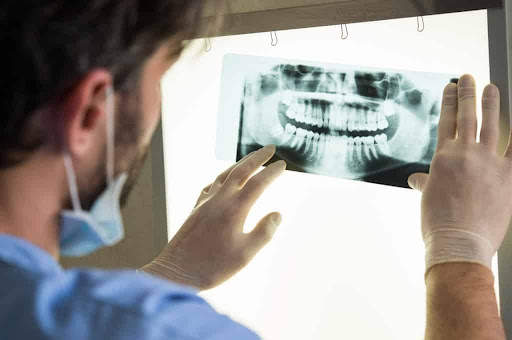What Is Dental Cavity: Symptoms, Types, Causes

Experiencing a toothache is an unbearable pain! It’s worth mentioning that tooth decay is one of the main causes of this discomfort. By learning how to prevent tooth decay, you can save yourself from such misery. That’s why it’s important to understand what a cavity is and how to get rid of it.

Table of Contents
What Is Dental Cavity?
A dental cavity is a hole in your tooth caused by acid and bacteria that eat away at the hard outer layer of your tooth. If left untreated, it can cause pain and infection. It’s important to take care of your teeth and visit the dentist regularly to prevent cavities from forming.
What Are the Symptoms of Dental Cavity?
Like any other disease, there are symptoms that can tell you there is a problem with your tooth. Here are the symptoms of tooth decay:
- Visible holes, pits, or cracks on your tooth surface,
- Bad breath, a bad taste in your mouth,
- Toothache or sensitivity,
- Swelling in your cheeks,
- or signs of gum disease such as bleeding gums.
What Causes Dental Cavity?
There are several conditions that can cause a decay in your tooth, including:
- Poor oral hygiene- The main reason for any dental problems is poor oral hygiene. That’s why following a dental care routine is always essential. In most cases, brushing your teeth or regularly visiting a dentist can prevent your teeth from developing cavities.
- Plaque buildup- The buildup of bacteria on your teeth after eating sugary or starchy foods results in the formation of plaque. Failure to remove plaque can lead to the development of stubborn tartar, which makes your teeth difficult to clean and provides a protective layer for bacteria that can eventually lead to tooth decay.
- Dry mouth- It is the condition that some people may experience due to taking specific medications or during an illness. Therefore, it is crucial to drink plenty of water to avoid this condition.
- Consuming sugary foods and drinks- Eating sweet or starchy things can cause bacteria to stick to your teeth and make plaque. Sugary drinks can also expose your tooth to more acid and create more plaque.
What Are the Dental Cavity Types?
Dental cavity has four classes that are categorized based on their depth. Dentists usually assess the cavity type based on the location and severity of the cavity so that they can recommend a dental procedure based on these classifications:
Class A: In this class, the decay is in its early stages and limited to the enamel. In most cases, if it is diagnosed at this stage, the dentist can use fluoride treatments or teeth cleaning to treat the problem.
Stage B: In this stage, the cavity may have extended more than halfway to the pulp. The dentist should remove the infection and perform fillings.
Class C: If the decay has spread to the dentin, depending on the infection or damage it has caused, a filling or root canal treatment is recommended.
Class D: This is the final stage of decay, usually when the decay has damaged or infected the pulp. If diagnosed early, the decay can be treated with a root canal, otherwise the tooth may need to be extracted.
How to Prevent Tooth Decay?
You can easily prevent tooth decay by following a daily dental routine or a healthy lifestyle. Here are some tips that can help you prevent dental cavities:
- Brush your teeth with a soft brush and fluoride toothpaste at least twice a day.
- Flossing after eating crunchy foods is also recommended. It is essential to follow a healthier diet in which there is not much sugary food and drinks.
- Stop smoking. You should note that smoking is one of the reasons that your teeth are stained. Additionally, it can increase plaque buildup.
- Rinse your mouth with mouthwash or salt water. Do it at least once a day to prevent plaques from forming.
- Visit a dentist regularly. It is essential to visit a dentist before you have a toothache
- because, during dental check-ups, dentists can diagnose cavities at their first stages. Therefore, it can be treated easier and more affordable.

How Are Dental Cavities Diagnoses?
Apart from the symptoms that show there is a problem with your teeth, dental cavities are not usually visible. You can’t always see the decay on your teeth by looking at them. Dentists use X-rays to see what’s happening inside your tooth. This helps them decide which type of treatment is required.
Can Dental Cavity Pain Be Treated at Home?
You may not be able to go to the dentist immediately or your dentist may give you an appointment for a few days later. How can you redeem the pain of the dental cavity? Here are some tips:
- Take painkillers.
- Use numbing gel over the pain.
- Rinse your mouth with saltwater.
- Put a cold or hot pack on your cheek over the pain.
- Clove oil can also help you get rid of cavity pain for a few hours.
How to Treat Dental Cavity?
Based on the different stages of the cavity, different dental procedures are recommended. The earlier the tooth cavity is diagnosed, the easier it will be treated.
Dental Fillings
In the early stages of the cavity, dental fillings might be performed. Dental fillings are used to repair teeth that have been damaged by decay or trauma. The process involves removing the decayed or damaged portion of the tooth and filling the cavity with a material such as composite resin, amalgam, or gold. Fillings can help restore the strength and function of a damaged tooth, while also preventing further decay or damage. With proper care and maintenance, dental fillings can last for many years.

Root Canal
The next stage is when the decay extends into or through the pulp. In this case, a root canal is performed, which is a dental procedure used to treat an infected or damaged tooth. The process involves removing the damaged or infected pulp from the tooth, cleaning out the root canals, and filling them with a material to prevent further infection. A crown may also be placed on the tooth to provide additional support and protection. Root canals are typically necessary when a cavity or injury has reached the innermost part of the tooth, causing pain and inflammation.
Tooth Extraction
If you don’t stop cavities in the previous stages, you may lose your tooth! In the last stage of the dental cavity, tooth extraction might be recommended. Tooth extraction is a dental procedure in which a tooth is removed from its socket in the jawbone. This may be necessary if a tooth is severely damaged or decayed, or if it is causing problems for other teeth. The procedure can be performed under local anesthesia, and in some cases, sedation may also be used.
Bottom Line
As can be seen, a dental cavity is a common dental problem that occurs when bacteria in the mouth produce acids that erode the tooth enamel, leading to decay. If left untreated, cavities can cause pain, infection, and even tooth loss. Regular dental check-ups and good oral hygiene practices such as brushing and flossing can help prevent cavities from developing. If a cavity does occur, it can be treated with a filling or other dental procedures to restore the tooth’s function and prevent further damage.




